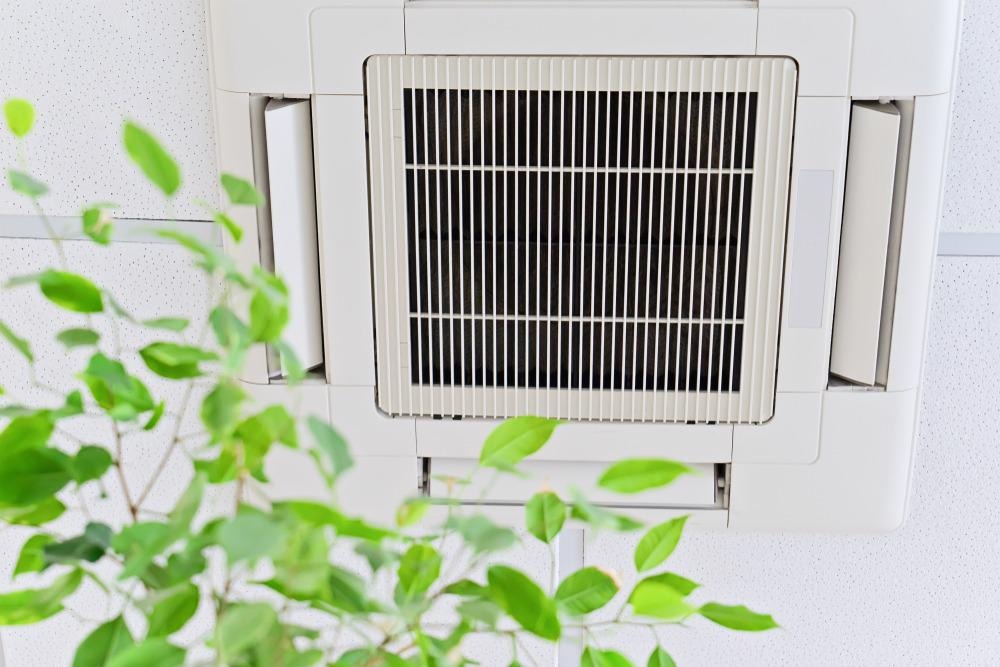Emerging research on the use of nanotechnology for increasing indoor air quality (IAQ) has included developments in the removal of indoor air pollutants and volatile organic compounds. This research has been published in the journal, Materials Science and Engineering: B.

Study: Fabrication and characterization of multifunctional nanoclay and TiO2 embedded polyamide electrospun nanofibers and their applications at indoor air filtration. Image Credit: Kira_Yan/Shutterstock.com
Significance of Indoor Air Quality
Indoor air pollution is one of the top five environmental issues that have been ranked by studies undertaken by the science advisory board within the Environmental Protection Agency (EPA) in the United States.
This type of pollution is a result of burning solid fuel sources, which can consist of firewood, crop waste, or dung for applications such as providing heat and cooking.
The World Health Organization (WHO) has regarded IAQ to be the world’s largest environmental risk as a singular factor, with this type of pollution being responsible for 4.1% of global deaths.
The common pollutants that contribute to IAQ consist of carbon dioxide, nitrogen oxide, volatile organic compounds (VOC), polycyclic aromatic hydrocarbons (PAHs), radon, cigarette smoke, toxic fumes from consumer products and more. These pollutants have been associated with a premature incidence of death as well as resulting in global mortality, especially within low-income countries.
VOCs can be particularly hazardous as these compounds have a boiling point lower than 250 degrees Celsius as well as high vapor pressure, resulting in evaporation at room temperature. Subsequently, when VOCs are present within indoor air, they can cause health issues, from headaches to neck pain and allergic skin reactions.
Additionally, these side effects can be worse when occupants have an existing health condition such as allergies or asthma, which may make these symptoms worse.
Removing VOCs
Removing volatile organic compounds from indoor air has become a critical focal point for researchers due to the high risk these pollutants can have on health.
Technologies like thermal and catalytic oxidation and other processes such as adsorption and filtration have been focused on to aid VOC removal.
Previous research has included the use of photocatalytic oxidation to remove VOCs from indoor air through the use of semiconductor catalysts and ultraviolet light which would aim to convert VOCs from their hazardous state to products such as water and carbon dioxide.
The researchers of this environmentally and health-conscious study have utilized the process of adsorption for the removal of VOCs, with previous studies using adsorption with activated carbon as a common method for addressing these hazardous compounds.
Novel Indoor Air Filtration
The team created multifunctional polyamide-6 (PA-6) electrospun nanofibers for the purpose of filtering indoor air; they utilized nanoclay (NC) as a nanoadsorbent as well as titanium oxide as a nanocatalyst for facilitating the photocatalytic oxidation of toluene.
The use of titanium oxide within nanoparticles has been previously shown to have high photocatalytic activity for toluene as well as being an effective oxidant for VOC decomposition.
Additionally, with electrospun nanofibers gaining popularity in applications such as indoor air filters, their natural inclusion in this research has been apt.
These nanofibers have unique characteristics such as high porosity, as well as having a high surface area to volume ratio, flexibility and modifiable pore size, which have further increased their benefit for use within this study.
The use of polyamide-6 is also quite considered as this polymer has the potential for being an air filter material; its biodegradable nature is also a benefit and with universal use, this research is sustainable in many aspects.
The material also has high mechanical properties such as high tensile strength and chemical stability as well as resistance, which would be helpful when in contact with various pollutants.
The aim of creating these innovative PA-6 electrospun air filters with nanotechnology incorporation would enable the removal of pollutants and increase indoor air quality. Additionally, the PA-6 nanoclay composite electrospun nanofibers are low-cost and allow for long-term use which enables this approach to be more sustainable and advanced when addressing indoor air quality.
Oxidation of toluene with low intensity of UV light can also be enabled, as well as a short reaction time; this would be significant for ensuring air purification is enhanced and stable over a long period of time.
Future Outlook
Having low-energy requirements, long-term use, self-cleaning technology and being low-cost has enabled this innovative research to advance the field of indoor air filtration to ensure the presence of pollutants, and their subsequent health effects, are decreased.
This research has the potential to be used globally, which would be especially significant with the increase in pollution and chemical waste from industrial companies.
Additionally, this technology could be used to ensure factory workers are not susceptible to reduced health when working around pollutants, which is a major concern in both low- and high-income countries.
To this end, the potential of this technology can be seen as promising for all industries to aid with reducing health risks and preventing environmental pollutants from leading to mortality rates.
Reference
Aydin-Aytekin, D., Gezmis-Yavuz, E., Buyukada-Kesici, E., Elif Cansoy, C., Alp, K. and Koseoglu-Imer, D., (2022) Fabrication and characterization of multifunctional nanoclay and TiO2 embedded polyamide electrospun nanofibers and their applications at indoor air filtration. Materials Science and Engineering: B, 279, p.115675. Available at: https://www.sciencedirect.com/science/article/pii/S0921510722000721
Further Reading
Ritchie, H. and Roser, M., (2022) Indoor Air Pollution. [online] Our World in Data. Available at: https://ourworldindata.org/indoor-air-pollution.
Indoor Science, (2022) % - Indoor Science. [online] Available at: https://indoorscience.com/blog/the-importance-of-indoor-air-quality/
Tran, V., Park, D. and Lee, Y., (2020) Indoor Air Pollution, Related Human Diseases, and Recent Trends in the Control and Improvement of Indoor Air Quality. International Journal of Environmental Research and Public Health, 17(8), p.2927. https://doi.org/10.3390/ijerph17082927
Disclaimer: The views expressed here are those of the author expressed in their private capacity and do not necessarily represent the views of AZoM.com Limited T/A AZoNetwork the owner and operator of this website. This disclaimer forms part of the Terms and conditions of use of this website.